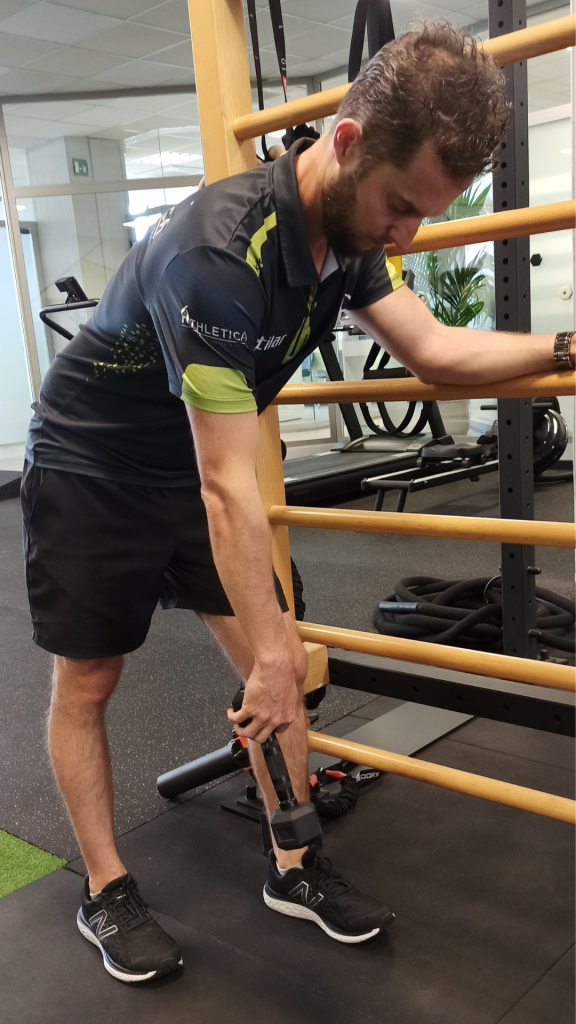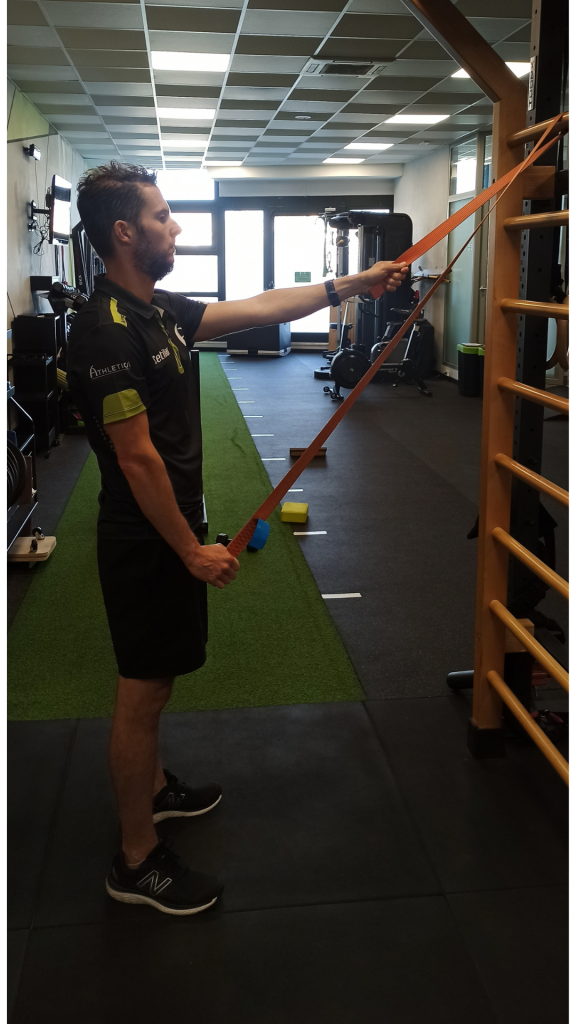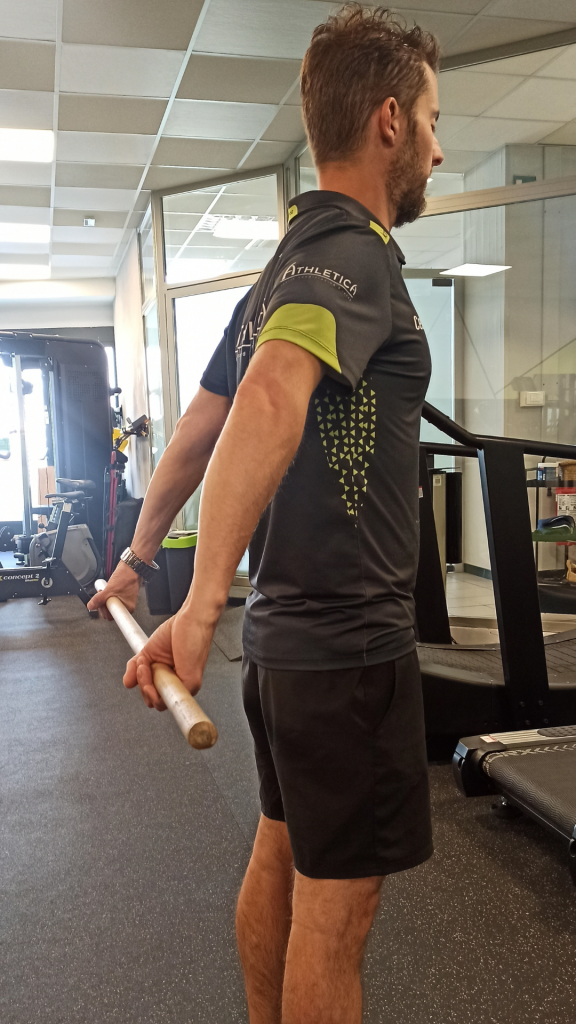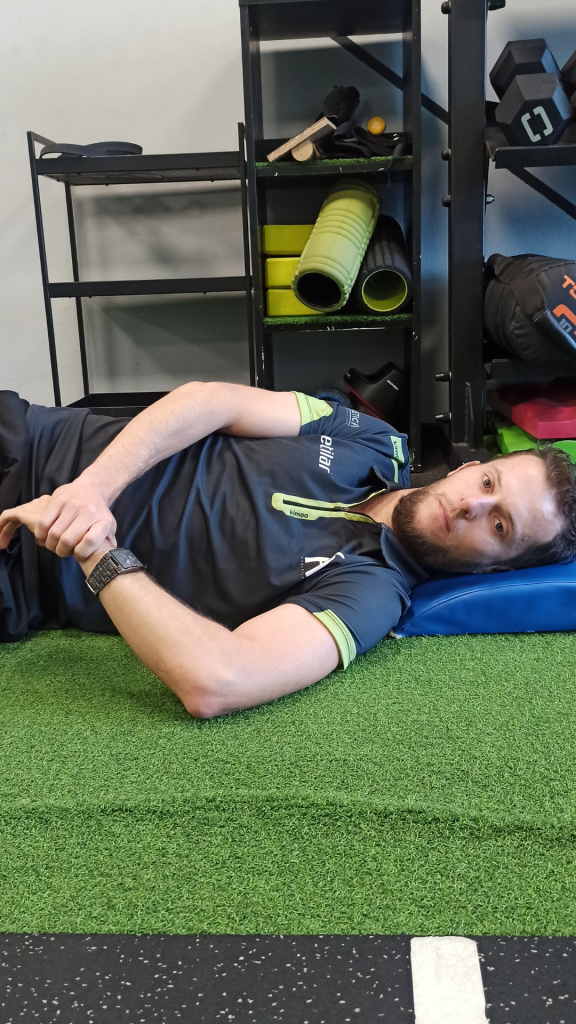Frozen Shoulder: causes of Adhesive Capsulitis and useful exercises for a quicker recovery

Frozen Shoulder is a painful inflammatory disorder that causes joint stiffness and difficulty in movement. Unfortunately, it is not always possible to establish the cause, but in most cases it subsides over time. However, a prompt identification of the early signs and starting physiotherapy and rehabilitation is useful in considerably reducing both the pain and the recovery time.
Let’s look with our physiotherapists on how the symptoms of Frozen Shoulder arise and what are the most useful exercises for a gradual recovery of joint mobility.
Frozen Shoulder: What is it, and which parts of the shoulder does it affect?
Frozen Shoulder, the correct medical term for which is Adhesive Capsulitis, is an inflammatory disorder of the glenohumeral joint, and in the initial phases causes intense pain, followed by progressive loss in range of mobility of the shoulder, culminating in a total blockage both of active and passive movements. This inflammatory condition causes fibrosis of the shoulder joint capsule, which in turn causes progressive stiffness and significant restriction of movement, above all in external rotation.
In most cases Frozen Shoulder tends to heal by itself, recovering complete, or nearly complete movement within a time frame that varies from a few months to two years.
Symptoms of Adhesive Capsulitis
Those suffering from Frozen Shoulder usually complain of acute, localised pain in the upper arm and around the humeral joint, apparently arising without cause, in other words not following trauma, sprains or other issues. The pain increases progressively and over time leads to a gradual loss of mobility in the shoulder, both in terms of active and passive movements.
A classic symptom of Adhesive Capsulitis is total or near-total loss of the ability for the shoulder to rotate externally. In many cases, there is also difficulty in performing tasks with the arm raised above the head or those with the hand behind the back (such as doing up a bra).
The course of inflammation passes through 3 phases:
- Acute/painful phase: gradual onset of pain in the shoulder at rest and acute pain at the ends of movements. Night-time pain disrupting sleep and difficulty in finding a comfortable position to sleep. This phase can last from 2 to 9 months.
- Adhesive/stiffening phase: pain starts to subside but leads to a progressive loss of movement of the glenohumeral joint. Pain is evident only at the ends of movements. This phase can start at around 4 months and last around 12 months.
- Resolution phase: spontaneous and progressive improvement of functional movement range, lasting from 5 to 24 months. Nonetheless, some studies suggest that it is a self-limiting condition and can last up to three years. Other studies have demonstrated that up to 40% of patients can have persistent symptoms and limited movement for over 3 years. It is estimated that 15% may suffer from persistent pain and disability in the long term.
Causes and diagnosis of Frozen Shoulder
The causes of frozen shoulder are still not completely clear. The aetiology is complex and multifaceted, and it is thought that both genetics and environmental factors play an important role. It appears that the triggering cause could be inflammation of the joint, followed by stiffness, which in turn leads to fibrosis of some components, and in particular the joint capsule.
There are two types of Frozen Shoulder:
- Primary Adhesive Capsulitis: onset is normally idiopathic (the cause is unknown).
- Secondary Adhesive Capsulitis: when the cause is known, such as surgery or trauma.
It is also believed that certain people suffering from diabetes mellitus can be particularly susceptible.
The diagnosis of Adhesive Capsulitis is made by an Orthopaedic specialist or Physiatrist after careful review of the medical history, a physical examination, and review of instrumental tests such as scans and MRI.
Does Frozen Shoulder go away by itself, or is physiotherapy needed?
Frozen Shoulder, for reasons still not well known, tends to heal by itself within a period from 9 months to 2 years. However, experience allows us to confirm that a prompt start with physiotherapy can significantly reduce recovery times.
Physiotherapy for Frozen Shoulder
Physiotherapy varies depending on the phase of disease progression.
In the initial phase, i.e., the inflammatory phase, the aim of physiotherapy is pain control. Therefore, focus is on delicate manual therapy or osteopathy techniques, careful joint mobilisation, relaxation of shoulder and back muscles, together with instrumental therapy such as Laser, Ultrasound, or Tecar, and specific exercises in the gym, if the pain allows this.
In the second phase, that of joint stiffness, treatment needs to be more incisive to recover the shoulder’s range of motion, both passively by joint mobilisation, manual and osteopathic techniques, and actively with stretching exercises and auto-mobilisation of the upper limb and upper back and chest.
In the third and last phase, however, rehabilitation focusses mainly on muscle strengthening and proprioception, together with stretching and mobilisation exercises to further improve the joint ROM (Range of Motion, i.e., level of joint mobility expressed in degrees).
Other treatments: instrumental therapy, acupuncture, taping
Together with the course of physiotherapy, there are other types of treatments that can help speed up recovery. For example, the specialist doctor may prescribe specific medicines (above all in the acute inflammation phase) or perform joint infiltrations. Acupuncture, performed by a doctor, has also been seen to be effective in the case of Frozen Shoulder.
Also, the physiotherapist may use instrumental therapies such as laser, impact wave, ultrasound or Tecar, and apply functional tapes such as kinesiotaping or similar.
Useful excercises to improve mobility of Frozen Shoulder
These are just some examples of exercises that can be practised independently in the early phases, with care, to improve shoulder mobility and reduce the pain:

Codman’s pendulum exercises
With a 0.5 or 1 kg weight, complete light anterior-posterior and latero-medial circumduction movements for 1-2 minutes.

Assisted mobilisation in flexion
Tie a cable or belt around the wall bars or to a support above your head. With the aid of your other arm, raise the affected shoulder, stopping when the pain first starts. Do this 20 times, repeating the series three times.

Mobilisation in extension with rod
Holding the rod behind your back and arms stretched, perform light movements to bring both hands towards the rear. Do this 20 times, repeating the series 3 times.

Sleeper Stretch (Posterior Capsule stretching)
Lying on the side of the affected shoulder, with your head resting on a cushion, use the healthy arm to perform light internal rotation movements. Do this 15 times, repeating the series 3 times.
Conclusions
Frozen Shoulder is a painful and debilitating condition, the onset of which is often without warning even in young people, is long-lasting and has negative effects on quality of life. Unfortunately, there is no specific treatment for this condition. It is therefore essential to get a prompt diagnosis by a specialist doctor to then draw up, together with a physiotherapist, a tailored rehabilitation plan. Each case is different and thus needs to be treated differently, depending on the phase of progress, age, pain threshold and degree of mobility of the individual concerned.
It is also important for the physiotherapist to explain to patients about the lengthy recovery times, changes to be made to their lifestyle and sports activities, to encourage them to keep with the treatment and ensure effective and satisfactory collaboration for the entire course of treatment.



